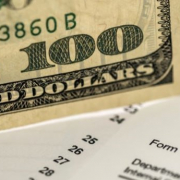Are You Making One Of The Top 3 Investing Mistakes?
 Those who have been investing long-term know that the market can challenge even the most seasoned professional.
Those who have been investing long-term know that the market can challenge even the most seasoned professional.
Volatility, coupled with the uncertainty of what’s next, can lead many to question why they invest in the market at all. Oftentimes, investors find themselves in a place of fear or uncertainty. This leads to decisions based on emotion and half-truths or misconceptions about money.
In this state, crucial mistakes are made that impact effective retirement savings strategies and disrupt income and cash flow in retirement. Three mistakes are quite common, and very avoidable once the facts are laid out and investors begin to see that what they thought to be true doesn’t always represent the full story:
Mistake #1: Focusing on Average Rates of Returns
Fact: An advertised average rate of return can provide a false representation of an investment’s actual result. Frankly, the numbers don’t often add up.
Take a hypothetical fund averaging 25% over the last two years. Knowing this fund “averaged” 25% would lead to the assumption that the investor has made money. However, it is possible to have not made a dime, so it’s important to pay attention to the math.
Let’s assume an opening account balance of $100. If the investment loses 50% in the first year, then turns around to earn 100% the next year, that mathematically equates to a 25% average, and the same $100 we started with.
$100 – 50% = $50 + 100% = $100
The Takeaway: Average returns don’t necessarily translate to dollars in your pocket. Investors can avoid this mistake by focusing instead on consistency, using year-over-year returns as a guide to evaluate a fund’s performance. Check out an investment’s performance during historically volatile times to determine its consistency. The goal is to look for investments with returns that show peaks and valleys that are mild — not wild — reflecting consistent performance and lower volatility.
Mistake #2 Focusing Too Much on Fees and Not Enough on Diversification
Fact: Fees are an important consideration for investors, but they should not be their primary focus. Instead, direct attention toward diversification and risk management.
Asset allocation, diversification and risk management are based on philosophies for how to spread out risk. If we believe these philosophies are the correct approach to building a portfolio, then we cannot limit our thinking to only fees. We have to consider product types and investment styles, otherwise we work against the entire paradigm.
This is important because there are many investment types (institutional investments, alternatives, annuities, life insurance, managed and passive investments). Each has a place when building a diversified portfolio, and all carry varying levels of fees.
The Takeaway: Consider fees, but only when comparing investments within the same category. (In other words, compare indexed funds to indexed funds.) Focus on building a portfolio that combines passive, managed and institutional investments, along with different product types to achieve a level of diversification not possible by using only one approach, and one fee structure.
Mistake #3 Thinking a Tax Deferral Is a Tax Savings
Fact: Tax-deferred retirement accounts are a deferral of liability, not a way to avoid taxes. Just keep in mind that a tax deferral should not be considered a tax savings, it is exactly what the name suggests — it’s a deferral. It is a pay-me-now or pay-me-later arrangement with the government.
Nearly everyone’s tax preparer has recommend funding their retirement plan to “save” on taxes. It is the most common advice given by tax professionals, but a tax deduction through deferral is not the same as a true tax savings. In fact, a typical scenario illustrates that there is no savings at all:
Let’s assume a $10,000 per year contribution into a traditional retirement account. Deduct the contribution and assume a hypothetical 8% annual rate of return compounded over 30 years. This would accumulate $1,223,000, which is 100% taxable upon withdrawal. Assuming a 25% tax liability, taxes owed would be $305,000, netting around $917,000.
Compare that to an after-tax account, where a $10,000 net of a 25% tax liability would leave $7,500 to invest. Assuming the $7,500 a year is then deposited into a tax-free account over the same 30 years at the same 8%, the same net amount of money is accumulated: $917,000 (accessible tax-free in retirement).
The Takeaway: There is not necessarily a tax savings when depositing into a pretax retirement account. It’s just a matter of when the taxes must be paid. And yes, it is OK to participate in a company plan up to the employer’s match, preferably via a Roth, if available. The larger issue to consider is controlling the outcome, which becomes more challenging in a tax-deferred situation:
- Will tax rates be higher, lower or the same when the taxes are due?
- Will the investor have the same tax deductions, or will deductions — like mortgage interest and child credits — no longer apply, placing the investor in a higher tax bracket?
- Does the investor want to access the money prior to age 59½*? If so, they’re out of luck, unless they take loans.
- Do they need the money by 70½**? If not, the IRS will still force distributions to begin.
Asking these questions helps paint a full picture, one which includes long-term planning versus the immediate gratification of perceived tax savings.
The Bottom Line
Most investors are guilty of making one or more of the above mistakes at some point. The key is to define purpose and clear vision for the money (what will it be used for and when?), consider the full story rather than commonly believed half-truths, and do the math. These steps will unravel the mysteries of investing, and lead to clearer, smarter decision making.
*Distributions are subject to an early withdrawal penalty of 10% on withdrawals prior to 59½, and you have very limited access to the money while you remain employed even if you are OK with paying the penalty! It is only when you terminate employment that you can have access to your money without a hardship or by taking a loan.
**The IRS enforces a Required Minimum Distribution (RMD) in the year you turn 70½.
Source: Kiplinger



